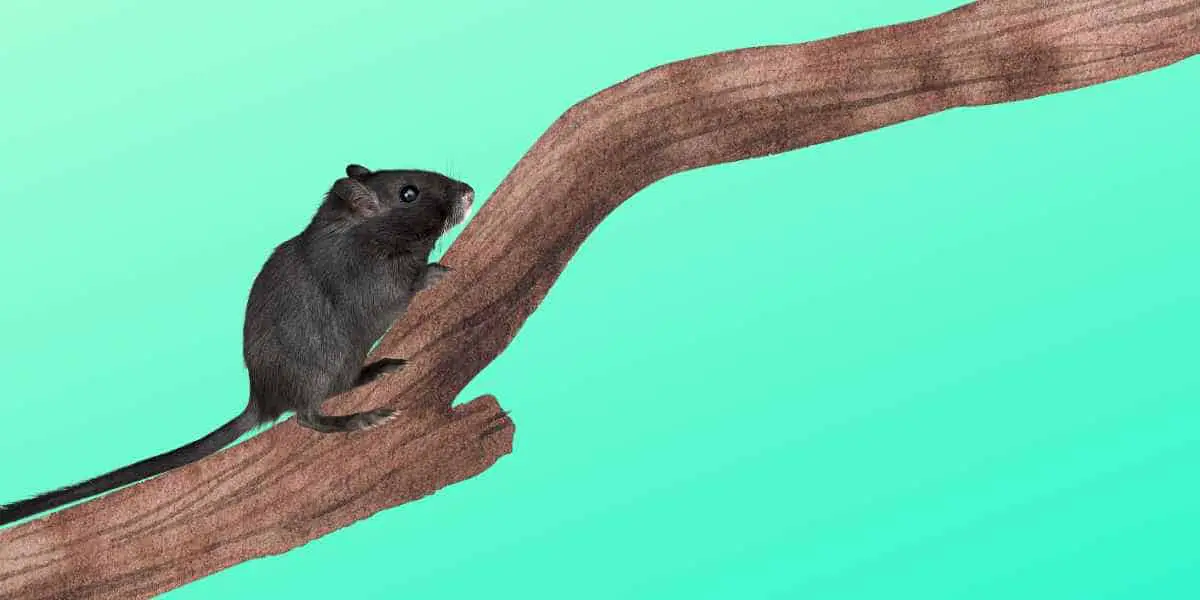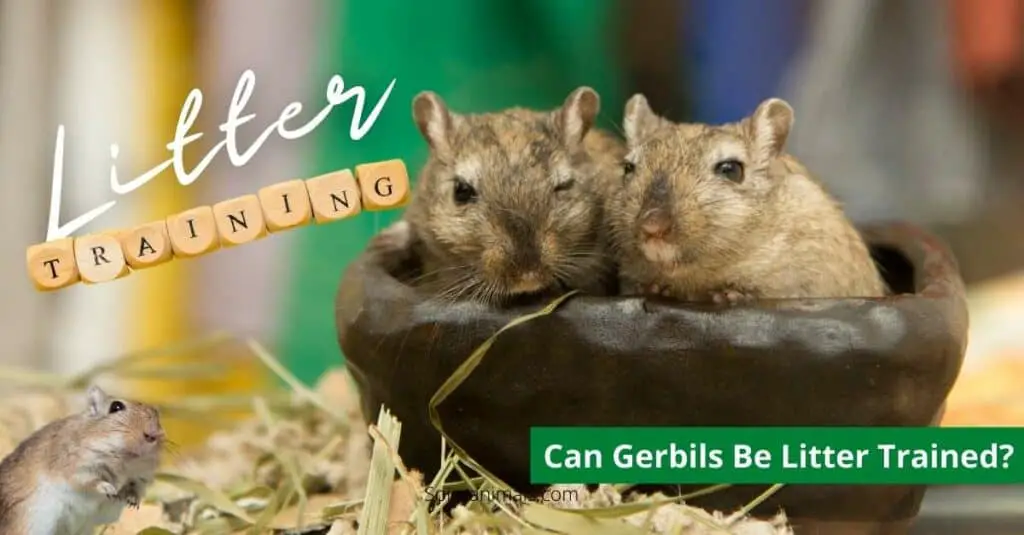If you’re here, it’s probably because you have a pet gerbil or are thinking of getting one. Either way, you’re in the right place!
Gerbils are natural climbers and burrowers. In the wild, gerbils live in burrows and are known to climb to explore their surroundings or escape predators. This instinct doesn’t go away in captivity. Your pet gerbil will love to climb and explore their cage, given the opportunity.
Here are some key points to remember:
- Gerbils love to climb: Whether it’s a ladder, a branch, or the bars of their cage, gerbils are natural climbers. They’ll even climb up vertical tubes if they’re able!
- Gerbils need the right environment: To keep your gerbil happy, you need to provide them with a suitable environment. This includes a spacious cage or tank with plenty of surfaces to climb and burrow.
- Toys are essential: Toys like tunnels, ladders, and cardboard tubes can provide much-needed enrichment for your gerbil. They love to chew, so untreated wood toys make great additions to their habitat.
- Gerbils are social animals: A pair of gerbils will be happier and healthier than a lone gerbil. They’ll enjoy running, playing, and climbing together.
- Safety is paramount: While gerbils can climb, they’re not as adept as some other rodents. Ensure their environment is safe, with no risk of falls or injuries.
In the following sections, we’ll delve deeper into these points, exploring everything from the best toys for your gerbil to how to create a gerbil-friendly environment. Whether you’re a seasoned gerbil owner or a newbie, there’s something here for everyone. So, let’s get started on this exciting journey of understanding your pet gerbil’s love for climbing!
Table of Contents
Do Gerbils Like to Climb? Unraveling the Climbing Instincts of Small Pets
So, you’ve got your pet gerbil (or are planning to get one), and you’re wondering, “Do gerbils like to climb?” The short answer is, yes! Gerbils love to climb. It’s a natural behavior that provides them with both physical exercise and mental stimulation.
In the wild, gerbils live in complex burrow systems and often need to climb to explore their surroundings or escape from predators. This instinct doesn’t disappear when they’re in captivity. In fact, climbing can be a great source of entertainment for these active little creatures.
Here are some key points to understand about gerbils and their love for climbing:
- Natural Climbers: Gerbils are good climbers. Their sharp claws and agile bodies allow them to scale various surfaces with ease. Whether it’s a branch, a tube, or the side of their cage, if it’s climbable, your gerbil will likely give it a go!
- Climbing for Exercise: Climbing is a great way for gerbils to stay active and healthy. It helps them burn off energy and keeps their muscles strong. So, if you see your gerbil scaling the cage bars or a climbing ladder, they’re just getting in their daily workout!
- Climbing for Exploration: Gerbils are curious creatures. They love to explore their environment, and climbing gives them a whole new perspective. They’ll enjoy the challenge of a vertical tube or the view from the top of a platform.
- Climbing for Fun: Yes, gerbils climb for fun! They enjoy the challenge and the change of scenery. If you provide them with climbing toys, you’ll often find them happily scampering up and down.
Remember, while gerbils are natural climbers, they’re not as adept as some other rodents. Always ensure their climbing adventures are safe. In the next sections, we’ll explore how to create a safe and stimulating climbing environment for your gerbil, and what toys and structures you can introduce to their habitat. Stay tuned!

How Well Can Gerbils Climb? Evaluating the Climbing Abilities of These Good Climbers
Now that we’ve established that gerbils love to climb, let’s delve into how well they can actually do it. Gerbils are indeed good climbers, but they have their limitations.
Here are some key points to understand about gerbils’ climbing abilities:
- Physical Attributes: Gerbils are small and agile, with sharp claws that help them grip onto surfaces. Their long tails also aid in balancing, making them quite adept at climbing various structures in their cage.
- Climbing Preferences: While gerbils can climb a variety of surfaces, they have their preferences. They’re particularly fond of climbing on branches, ladders, and tubes. However, they may struggle with smooth vertical surfaces, as their claws can’t grip onto these as easily.
- Climbing Limitations: Despite being good climbers, gerbils aren’t as skilled as some other rodents. For instance, they can’t climb glass or smooth plastic surfaces. They also aren’t great at climbing vertically, and they prefer to climb at a slight angle.
- Safety Considerations: While gerbils enjoy climbing, it’s essential to ensure they’re safe. Avoid placing climbing structures too high in the cage to prevent falls. Also, regularly check climbing toys for any damage that could harm your gerbil.
Remember, every gerbil is unique. Some may be more adventurous climbers than others. It’s important to observe your gerbil and cater to their individual preferences and abilities.
What Makes a Happy Gerbil? Exploring Climbing and Other Joyful Activities
Creating a happy gerbil involves more than just providing food and water. Gerbils are active and curious creatures that need a stimulating environment to thrive. Let’s explore the activities that contribute to a gerbil’s happiness, including their love for climbing.
- Climbing: As we’ve established, gerbils love to climb. Whether it’s a ladder, a branch, or a tube, climbing is a natural and enjoyable activity for them. Just make sure that the climbing structures are sturdy and safe.
- Digging: Gerbils are natural burrowers. In the wild, they dig complex tunnel systems in the ground. You can replicate this in their enclosure by providing a deep layer of bedding. They’ll happily spend hours digging tunnels and burrows.
- Chewing: Gerbils need to chew to keep their teeth healthy. Providing chew toys made of untreated wood or cardboard can keep them entertained and contribute to their dental health.
- Running: Gerbils are active animals that need plenty of exercise. A running wheel is a great addition to their enclosure. Just make sure it’s solid (not wire) to prevent any accidental paw injuries.
- Foraging: In the wild, gerbils spend a lot of time foraging for food. You can replicate this behavior by hiding treats in their bedding or in foraging toys. This will keep them mentally stimulated and mimic their natural behavior.
- Bathing: Unlike hamsters, gerbils don’t take water baths. Instead, they take dust baths to keep their fur clean. Providing a shallow dish with chinchilla sand (not dust) will allow your gerbil to indulge in this natural behavior.
- Socializing: Gerbils are social animals and are often kept in pairs or small groups. Having a companion can greatly contribute to a gerbil’s happiness.
Remember, a happy gerbil is one that can exhibit its natural behaviors. By providing a suitable environment and plenty of opportunities for climbing, digging, chewing, and running, you’ll ensure your gerbil leads a happy and healthy life.
Can Gerbils Climb Up Ladders, Tubes, and Other Objects? A Look at Their Vertical Adventures
If you’re a pet gerbil owner or are considering becoming one, you might be wondering about their climbing abilities. Specifically, can gerbils climb up ladders, tubes, and other objects? The answer is a resounding yes! Gerbils can climb, and they absolutely love it. Let’s explore this in more detail.
- Ladders: Gerbils are quite adept at climbing ladders. Whether it’s a ladder attached to the side of their cage or a standalone ladder toy, your gerbil will likely take to it with enthusiasm. Just make sure the rungs are close enough together for your gerbil’s small size.
- Tubes: Tubes are another favorite among gerbils. They love to climb through them, especially if the tubes are part of a more extensive tunnel system. You can use plastic tubes designed for small pets or even small cardboard boxes and toilet paper rolls.
- Vertical Surfaces: Gerbils can also climb vertical surfaces, but they’re not as adept at this as some other rodents. They prefer surfaces with a slight angle, as these are easier for them to climb. However, with the right motivation, they can and will climb up vertical tubes.
- Other Objects: Gerbils can climb a variety of other objects, including branches, rocks, and even the bars of their cage. They love to explore and will use their climbing skills to do so.
When providing climbing objects for your gerbil, safety should be your top priority. Ensure that all objects are sturdy and secure and that there’s soft bedding at the bottom of the cage to cushion any accidental falls. Also, regularly check all toys and climbing structures for any signs of wear and tear that could harm your gerbil.
Remember, climbing is not just a fun activity for your gerbil; it’s also a great source of exercise and mental stimulation. By providing a variety of climbing opportunities, you’ll contribute to your happy gerbil’s overall well-being.
Creating a Gerbil-Friendly Environment: Incorporating Climbing Toys for Your Pet
Creating a gerbil-friendly environment is crucial for your pet gerbil’s happiness and well-being. A significant part of this involves incorporating climbing toys that cater to their natural climbing instincts. Here’s how you can do it:
- Choosing the Right Cage: The first step in creating a gerbil-friendly environment is choosing the right cage. It should be spacious, with plenty of room for your gerbil to move around and climb. A cage with vertical space is ideal as it allows for the addition of climbing structures.
- Incorporating Climbing Toys: There are many climbing toys available on the market, from ladders and ropes to branches and tubes. You can also use items like small cardboard boxes or toilet paper rolls. Just make sure any toys you choose are safe and free from harmful chemicals.
- Creating Vertical Interest: Gerbils love to climb up vertical tubes and explore different levels in their cage. Consider adding platforms or shelves at different heights to create vertical interest. Just ensure they’re securely attached to prevent falls.
- Providing Safe Bedding: Gerbils love to burrow and dig, so providing a deep layer of safe bedding is essential. It also serves as a soft landing for any accidental falls from climbing structures.
- Regularly Rotating Toys: To keep your gerbil’s environment stimulating, regularly rotate their toys. This will keep their environment fresh and exciting, encouraging them to explore and climb.
- Ensuring Safety: Always ensure the safety of your gerbil’s environment. Regularly check all toys and climbing structures for any signs of wear and tear that could harm your gerbil. Also, ensure there are no small gaps or holes that your gerbil could get stuck in.
Remember, every gerbil is unique. What one gerbil enjoys, another might not. Observe your gerbil’s behavior and preferences to create an environment that they’ll love.
Gerbils and Vertical Climbing: Can Gerbils Climb Up Vertical Tubes?
You’ve probably noticed by now that your gerbil loves to climb. But one question that often comes up is, can gerbils climb up vertical tubes? The answer is yes but with some caveats. Let’s delve into this fascinating aspect of gerbil behavior.
- Natural Climbing Abilities: Gerbils are naturally good climbers. They have sharp claws and a long tail, which they use for balance. This makes them quite adept at climbing various structures, including vertical ones.
- Vertical Tubes: Gerbils can and do climb up vertical tubes. However, they prefer tubes with a slight angle as these are easier for them to navigate. If you’re providing vertical tubes in your gerbil’s cage, make sure they’re not too tall to prevent any accidental falls.
- Safety Considerations: While gerbils are able to climb vertical tubes, safety should always be your top priority. Ensure the tubes are sturdy and secure, and that there’s soft bedding at the bottom of the cage to cushion any falls. Also, regularly check the tubes for any signs of wear and tear that could harm your gerbil.
- Encouraging Vertical Climbing: If you want to encourage your gerbil to climb vertically, start with shorter tubes and gradually increase the height as your gerbil becomes more confident. You can also place treats at the top of the tube to motivate your gerbil.
- Observing Your Gerbil: Every gerbil is unique. Some may love climbing vertical tubes, while others may prefer other types of climbing structures. Observe your gerbil’s behavior to understand their preferences and cater to them.
Do All Gerbils Like to Climb? Understanding Individual Preferences Among These Small Pets
We’ve established that gerbils, as a species, love to climb. But do all gerbils like to climb? The answer is, it depends. Just like humans, every gerbil is unique with its own personality and preferences. Let’s explore this further.
- Individual Differences: While most gerbils enjoy climbing, not all of them will show the same level of interest. Some might spend hours climbing and exploring, while others might prefer to burrow or run around their cage. It’s important to observe your gerbil’s behavior to understand their individual preferences.
- Age and Health Factors: A gerbil’s age and health can also influence their interest in climbing. Young and healthy gerbils are usually more active and more likely to climb than older or unwell gerbils. If your gerbil used to climb but has stopped, it might be a good idea to consult a vet.
- Safety and Comfort: Some gerbils might not climb if they don’t feel safe or comfortable. Ensure the climbing structures are sturdy, the cage is secure, and there’s soft shaving or litter at the bottom of the cage to cushion any accidental falls.
- Encouraging Climbing: If you want to encourage your gerbil to climb, make sure the climbing structures are suitable for them. Start with lower structures and gradually introduce taller ones. You can also use treats to motivate your gerbil to climb.
- Remember, the goal is to create an environment that caters to your gerbil’s individual preferences and needs
The Risks and Benefits of Climbing for Gerbils: Balancing Adventure and Safety
- Climbing is a natural and enjoyable activity for gerbils, but like any physical activity, it comes with its own set of risks and benefits. As a responsible pet owner, it’s important to understand these to ensure your gerbil’s well-being.
Benefits of Climbing
- Exercise: Climbing is a great form of exercise for gerbils. It helps them burn off energy, keeps their muscles strong, and contributes to their overall health.
- Mental Stimulation: Climbing provides mental stimulation for gerbils. It challenges them, keeps them engaged, and helps prevent boredom.
- Natural Behavior: Climbing allows gerbils to exhibit their natural behaviors. This can contribute to their happiness and well-being.
Risks of Climbing
- Falls: The primary risk associated with climbing is the potential for falls. Gerbils are generally good climbers, but accidents can happen, especially if the climbing structures are too high or not secure.
- Injuries: Gerbils can also get injured if they get their toes or tails stuck in the climbing structures. Always ensure the structures are safe and free from any potential hazards.
Balancing Adventure and Safety
- To balance the benefits of climbing with the potential risks, here are some safety measures to consider:
- Safe Climbing Structures: Ensure all climbing structures are sturdy, secure, and free from any potential hazards. Avoid structures with small gaps or holes where your gerbil could get stuck.
- Appropriate Height: Avoid placing climbing structures too high in the cage. A fall from a great height can injure your gerbil.
- Soft Landing: Provide a soft landing to cushion any falls. A deep layer of bedding at the bottom of the cage can help with this.
- Regular Checks: Regularly check all toys and climbing structures for any signs of wear and tear. Replace any items that are damaged or no longer safe.
- Remember, every gerbil is unique. What one gerbil enjoys, another might not. Observe your gerbil’s behavior and preferences to create a safe and stimulating environment that they’ll love.
Developing Climbing Skills: How Gerbils Learn to Climb
- Gerbils are natural climbers, but like any skill, climbing is something that gerbils learn and develop over time. Let’s explore how gerbils learn to climb and how you can support their climbing development.
- Natural Instinct: Climbing is a natural instinct for gerbils. Even at a young age, gerbils will start to explore their environment, including climbing on any available surfaces.
- Learning Through Play: Gerbils learn to climb through play. By providing a variety of climbing structures in their cage, you give your gerbil the opportunity to practice and develop their climbing skills.
- Trial and Error: Gerbils learn a lot through trial and error. They’ll test out different surfaces, angles, and techniques, learning what works and what doesn’t. This is a normal part of their learning process.
- Building Confidence: As your gerbil becomes more confident in their climbing abilities, they’ll start to tackle more challenging climbs. You can support this by gradually introducing taller and more complex climbing structures.
- Safety First: While it’s important to encourage your gerbil’s climbing development, safety should always be your top priority. Ensure all climbing structures are sturdy and secure, and that there’s soft bedding at the bottom of the cage to cushion any falls.
The Joy of Climbing: Understanding Your Gerbil’s Love for Vertical Adventures
- As we’ve explored throughout this guide, gerbils have a natural love for climbing. But why do they enjoy it so much? Let’s delve into the reasons behind your gerbil’s love for vertical adventures.
- Physical Exercise: Climbing provides gerbils with a great source of physical exercise. It helps them burn off energy, keeps their muscles strong, and contributes to their overall health.
- Mental Stimulation: Climbing is mentally stimulating for gerbils. It presents them with a challenge and keeps them engaged, helping to prevent boredom.
- Exploration and Curiosity: Gerbils are naturally curious creatures. They love to explore their environment, and climbing gives them a whole new perspective. It allows them to satisfy their curiosity and explore their surroundings from different heights.
- Natural Instinct: In the wild, gerbils live in complex burrow systems and often need to climb to explore their surroundings or escape from predators. This instinct doesn’t disappear when they’re in captivity. Climbing allows them to exhibit their natural behaviors, contributing to their happiness and well-being.
- As a pet owner, you can support your gerbil’s love for climbing by providing a safe and stimulating environment. This includes choosing the right cage, incorporating a variety of climbing structures, and ensuring the safety of their climbing adventures.
Wrapping Up: Understanding the Climbing Behavior of Gerbils
In this comprehensive guide, we’ve delved into the intriguing world of gerbils and their propensity for climbing. We’ve unraveled their innate climbing instincts, and discussed how to foster a secure and stimulating environment that encourages this behavior. Here’s a recap of the essential points about gerbils and their climbing habits:
- Gerbils are inherently adept climbers. They possess a natural affinity for climbing and will seize any opportunity to do so.
- Climbing serves as both a physical workout and a source of mental engagement for gerbils. It enables them to display their instinctual behaviors, thereby enhancing their overall well-being.
- Safety is paramount. Ensure all climbing structures are robust and stable, and that there’s soft bedding at the base of the cage to cushion any accidental falls.
- Each gerbil is distinct. Monitor your gerbil’s behavior and preferences to tailor an environment that they will relish.
As a pet owner, your responsibility is to facilitate your gerbil’s natural behaviors while guaranteeing their safety. By acknowledging and nurturing your gerbil’s love for climbing, you’ll not only boost their happiness and health but also deepen your comprehension and admiration of these captivating creatures.
- We appreciate your company in this exploration into the world of gerbils and their climbing tendencies. We trust that this guide has been enlightening and beneficial. Here’s to many happy climbing adventures for your gerbil!
- Each gerbil is distinct. Monitor your gerbil’s behavior and preferences to tailor an environment that they will relish.
- As a pet owner, your responsibility is to facilitate your gerbil’s natural behaviors while guaranteeing their safety. By acknowledging and nurturing your gerbil’s love for climbing, you’ll not only boost their happiness and health but also deepen your comprehension and admiration of these captivating creatures.
- We appreciate your company in this exploration into the world of gerbils and their climbing tendencies. We trust that this guide has been enlightening and beneficial. Here’s to many happy climbing adventures for your gerbil!




